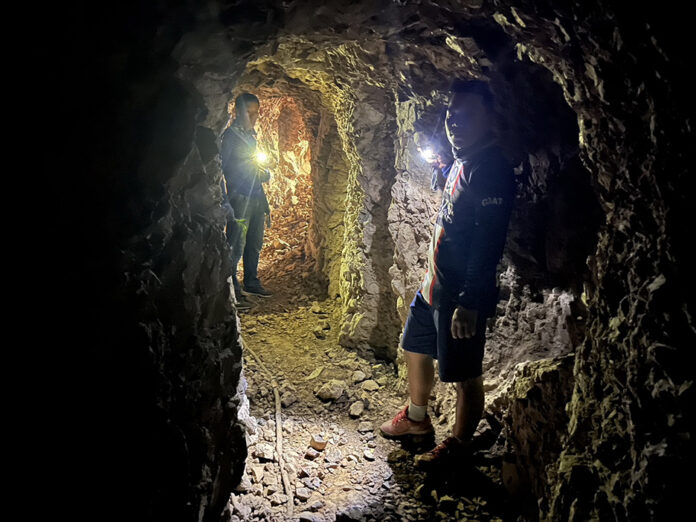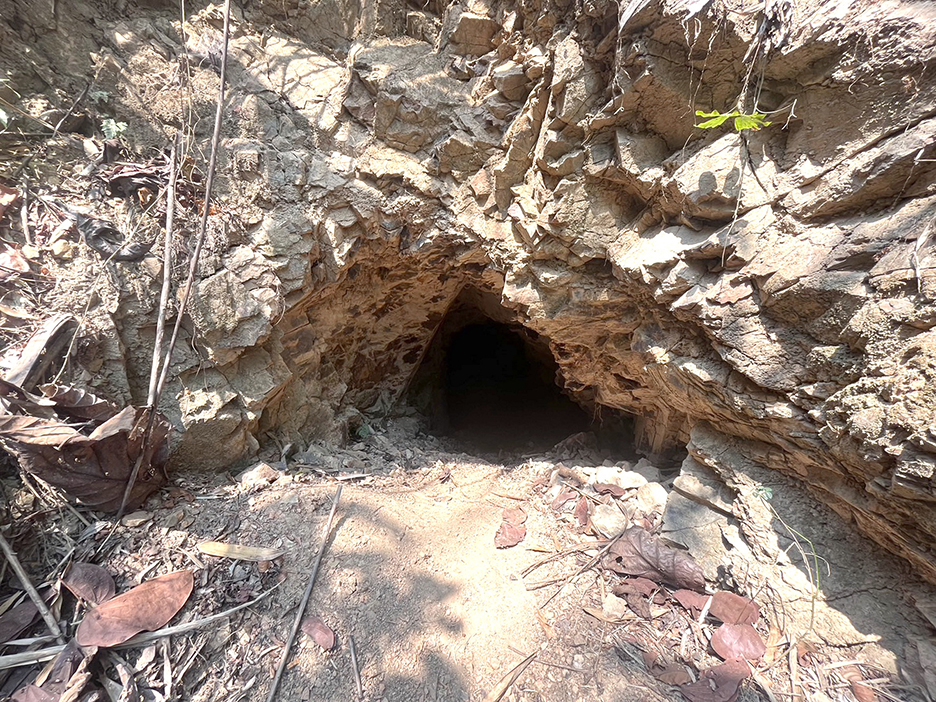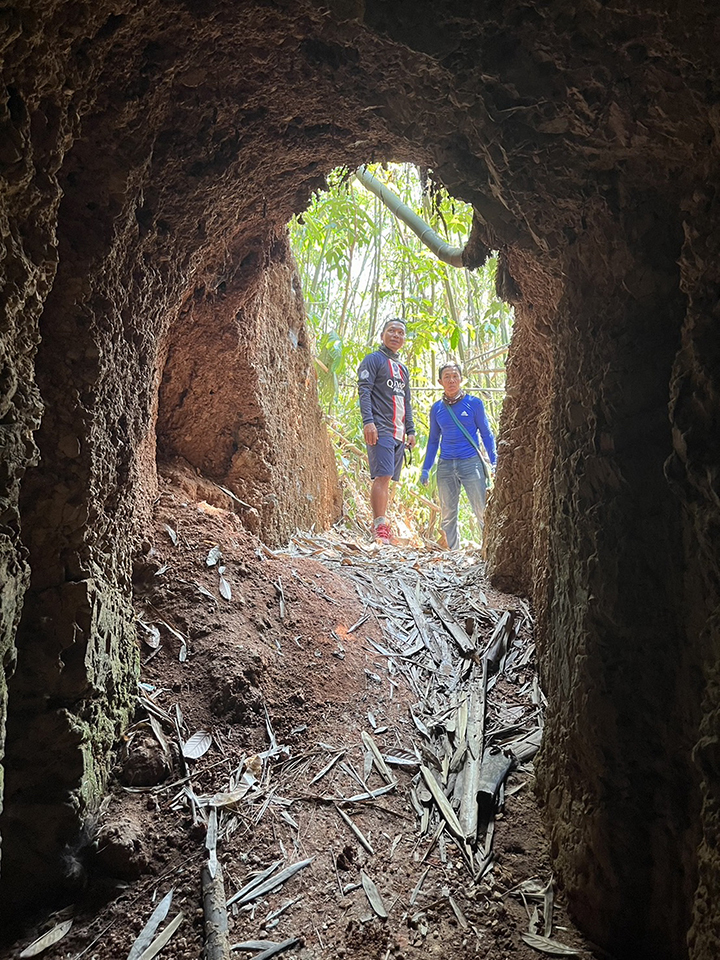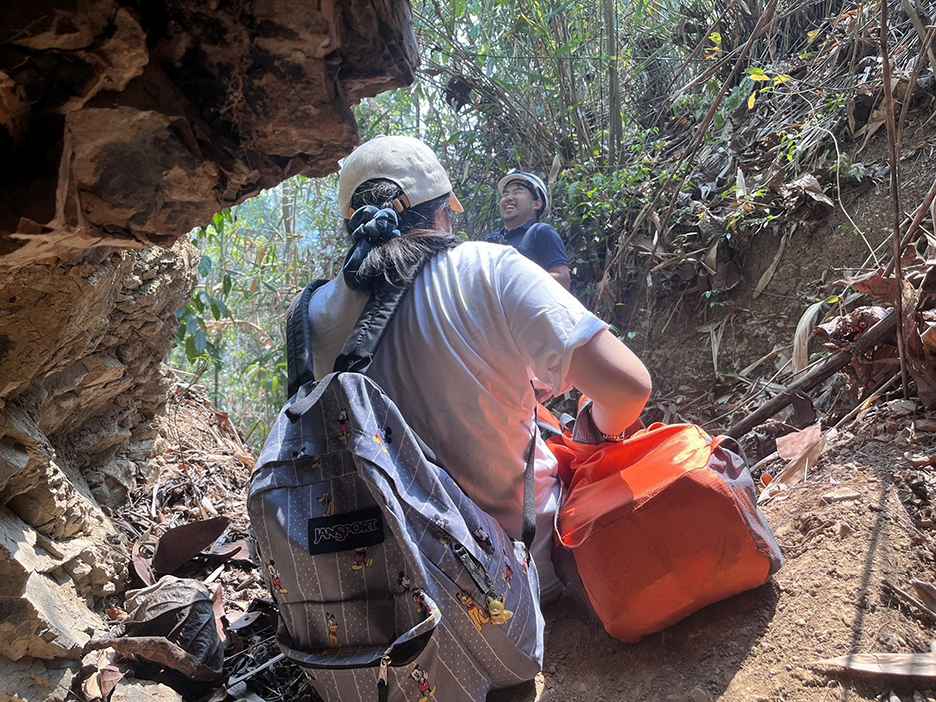
KANCHANABURI – Manchai Wattanakaran and Srawut Traisangsiriphong, residents of Sangkhla Buri district, Kanchanaburi province, who discovered the tunnel believed to have been built by Japanese soldiers during World War II in Kanchanaburi province, led a team from Nippon TV in Japan to film the newly discovered tunnel.
It is located in Ban Songkalia, Village 8, Nong Lu sub-district, Sangkhla Buri district. The Thai media reported on this tunnel at the end of March and received a lot of attention.
The entrance to the tunnel is quite narrow and people have to bend down to enter slowly. Once they are inside, however, the tunnel is about 2 meters wide and 1.80-1.90 meters high.

The distance from the entrance to the end of the tunnel is about 35 meters. The air inside the tunnel is quite cool and pleasant, with a temperature of around 20-25 degrees Celsius. The overall condition of the tunnel is quite good, with only traces of landslides at the entrance and at the end of the tunnel.
Jumpei Tanaka, a news anchor for Nippon TV, said through Chalanlak Janwanphen, a Nippon TV reporter based in Thailand, that he did not think there would be so many historical remains from World War II left in this area. He said that Japanese people today do not think that Thailand would have been involved in the Japanese military doing something like this.
However, after filming, he said he wanted both young and old Japanese people to see the history of what the Japanese military did during World War II, and that they might have done even worse things. He hopes that the filming will be able to communicate something to the Japanese people.

In addition to filming at the tunnel, the Nippon TV team also filmed four other historical sites related to World War II:
- The remains of the Death Railway, located near the old airport, on Highway 323, Village 8, Ban Songkalia.
- The remains of a bridge pier located near the Songkalia stream water play area.
- The water well for refilling locomotives located at the pier in the middle of Ban Songkalia village, behind Ban Songkalia School.
- The cement storage area and railway bomb crater located inside a rubber plantation in Ban Songkalia, on Highway 323, Songkalia-Ban Phra Chedi Sam Ong route.

Kanchanaburi province is home to the world-famous River Kwai Bridge, an important historical site of the Second World War. The Japanese army forcibly recruited some 61,700 Allied prisoners of war, including British, American, Australian, Dutch and New Zealand soldiers as well as Chinese, Vietnamese, Javanese, Malay, Thai, Burmese and Indian laborers to build the strategic railroad line connecting to Burma.
The construction of the bridge and railroad was marked by hardship, the brutality of war, disease and food shortages, resulting in the deaths of tens of thousands of prisoners of war. It became known as the “Death Railway”. Every year, a memorial service is held at the bridge, attended by representatives from many countries.















































